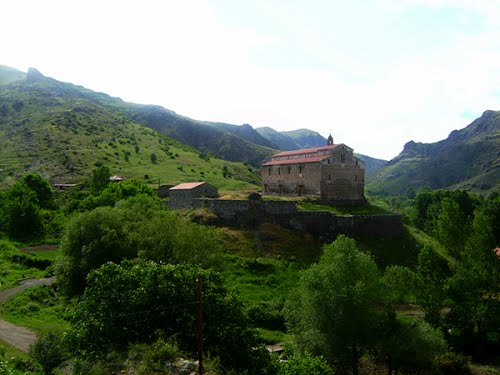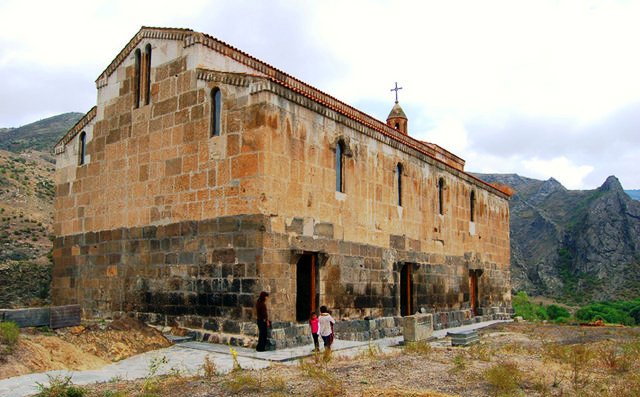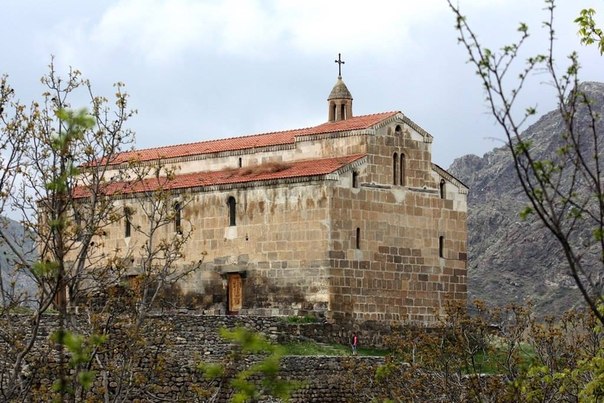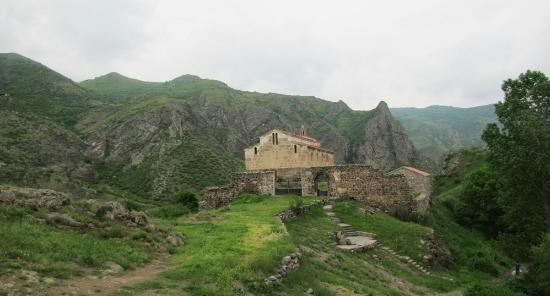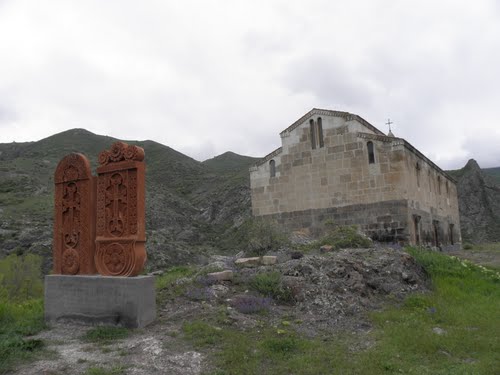Tzitzernavank is a fifth- to sixth-century Armenian church and former monastery in the Qashatagh Province of Nagorno-Karabakh Republic (formerly Lachin Rayon of Azerbaijan). The monastery is within five kilometers of the border of Armenia's province of Syunik.
When constructed, Tzitzernavank lay in Aghahejk, one of the 12 regions of the historical Armenian province and principality of Syunik (Siwnik). By the 15th century Aghahejk had spit into two districts: the northern half was called Khozhoraberd; the southern half, containing Tzitzernavank, was called Kashatagh.
The basilica of Tzitzernavank was believed to contain relics of St. George the Dragon-Slayer. In the past, the monastery belonged to the Tatev diocese and is mentioned as a notable religious center by the 13th century historian Stepanos Orbelian and Bishop Tovma Vanandetsi (1655).
In 1613, the monastery's fortified wall was repaired and its arched gateway was constructed - the building inscription in Armenian recording this act disappeared between 1989 and 1992, when the region was under the control of Azerbaijan. The church and its belltower were renovated in 1779. The building inscription in Armenian recording this renovation disappeared in 1967.
In the 19th century it served as the parish church for the adjoining peasant settlement of Zeyva, and was called St. Stephanos. Zeyva's Armenian inhabitants fled during the 1905 Armenian-Tartar war, never to return. During the Soviet period the village was renamed Gusulu and the church was unused but preserved as an historical monument. Tzitzernavank's church of St. George (St. Gevorg) was reconsecrated in October 2001, after a heavy restoration in 1999-2000 paid for by Armenian diaspora funds, and is a venue for annual festivals honoring St. George.
The church has no early building inscriptions; however, based on its appearance, it is believed to have been constructed in three main stages. Its earliest form appears to have been a simple rectangular basilica, without an apse. Based on the style of the doorways in its south wall, this building period has been dated to the 5th or 6th century AD. However, an alternative thesis exists that dates this stage to the 3rd century AD, and suggests that it was a pre-Christian temple. During the second stage of construction, a windowless apse was added (constructed inside the eastern end of the rectangular interior) and the upper parts of the outside walls were built. This may have happened in the 6th century. At this period, the arcades that separated the interior nave from its aisles were probably still constructed of timber. In the third period of construction, stone pillars and arches replaced them. Based on the style of their capitals, this occurred sometime between the end of the 6th century and the beginning of the 10th century.
The monastery is recognized as a native Armenian example of an "oriental" basilica. Being a three-nave basilica, like most of those in Armenia of V-6th centuries; Tzitzernavank's central nave is only slightly taller than the lateral naves, from which it is separated by two rows of pillars. The plan is similar to a series of Armenian basilicas like Yereruyk, Yeghvard, Dvin, Ashtarak (Tsiranavor), Tekor - in that it had an interior composed of three aisles or naves, the central and largest one of which was separated from the others by pillars which also helped support the roof.




